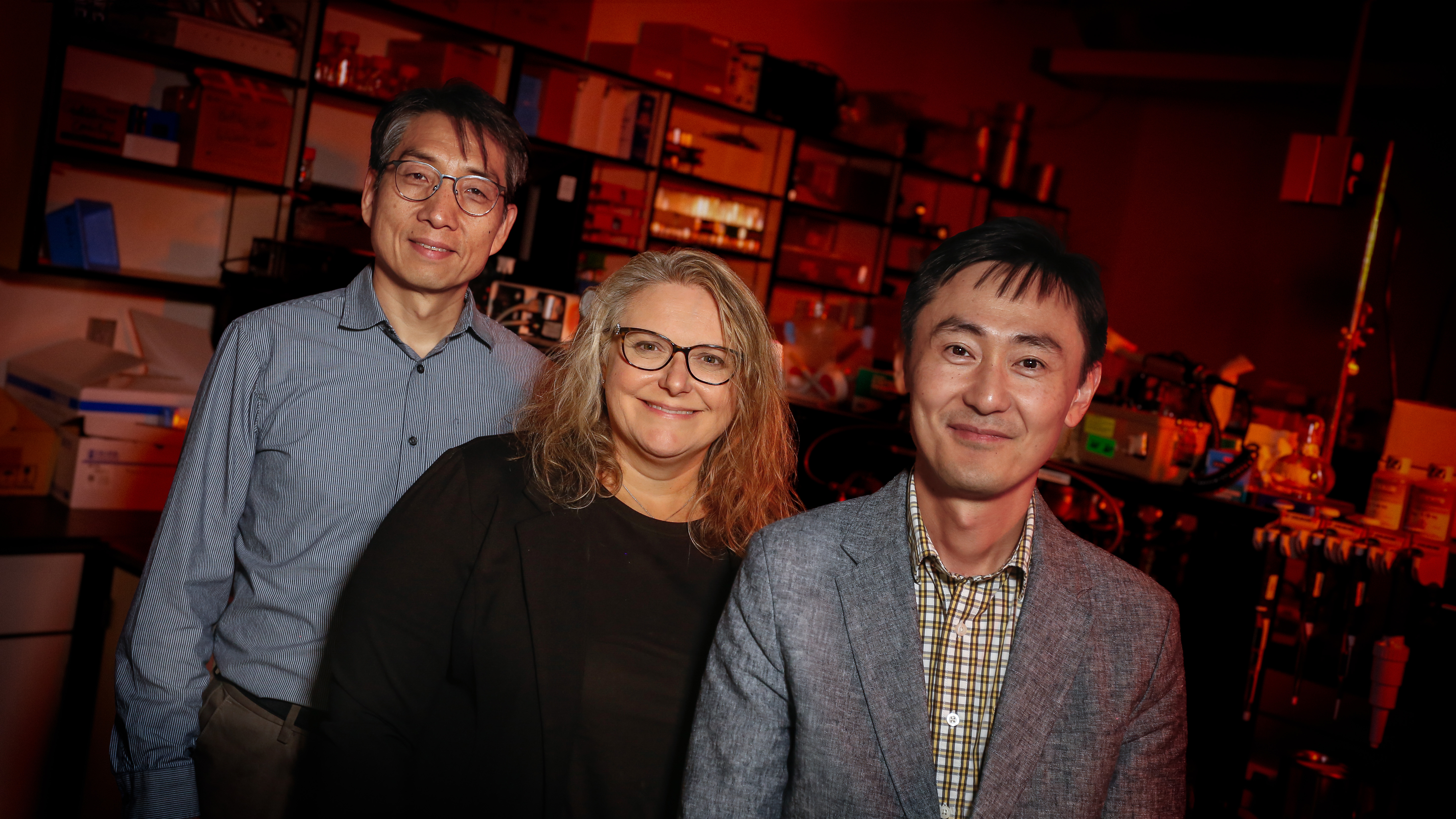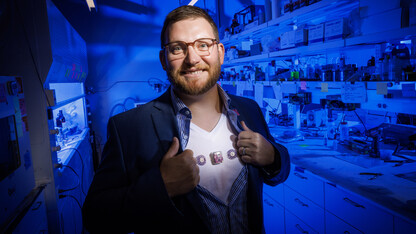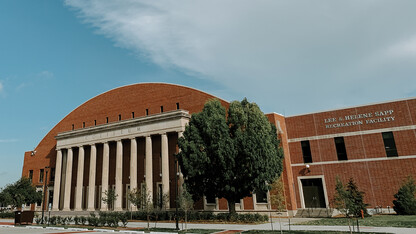
Some 1.1 billion years ago, the North American continent nearly split in two, leaving behind a 1,200-mile swath of volcanic rocks known as the Midcontinent Rift that may be able to produce enough natural hydrogen to yield vast amounts of clean energy.
University of Nebraska–Lincoln researchers are studying the rift — which runs from beneath Lake Superior through parts of Minnesota, Michigan, Wisconsin, Iowa, Nebraska and Kansas — to determine how best to access that hydrogen.
Hydrogen is potentially a key player in the effort to reduce reliance on fossil fuels. It produces no carbon emissions and, unlike oil and gas that can take millions of years to generate from organic deposits, it is constantly renewing underground when water interacts with the volcanic rock.
But there is much to learn.
“Our understanding of processes governing the production, migration and accumulation of evasive natural hydrogen in the continental deep subsurface is still in its infancy,” said Seunghee Kim, Charles J. Vranek Associate Professor of civil engineering and one of the project’s principal investigators.

To test the viability of hydrogen production in the rift, a test well was drilled in Nebraska five years ago. So far, the data is promising. Scientists believe it is possible the geomechanical and biogeochemical conditions in the rift limit the loss and consumption of this naturally generated hydrogen, which could leave trapped hydrogen “at an economically meaningful scale in the mid-continent subsurface.”
The Midcontinent Rift is estimated to be 3,000 to 5,000 feet underground.
“It could be deep enough to be stored but shallow enough that we can access it,” said Karrie Weber, professor of Earth and atmospheric sciences and biological sciences and another project investigator. “The geology is in our favor.”The U.S. Geological Survey estimates between tens of millions and tens of billions of megatons of hydrogen are in Earth’s crust. But much of that would be inaccessible to humans because it is either too deep or too far offshore, or present in amounts too small to exploit. That is what makes sites like the Midcontinent Rift so important. Other subsurface rifts in the world — located in France, Germany, Russia and the African continent — could also produce hydrogen, Kim said.
The U.S. Geological Survey estimates there might be enough accessible natural hydrogen under the Earth’s surface to meet global energy needs for thousands of years.
Kim said the Nebraska team will explore several questions surrounding hydrogen flow and seepage from the subsurface to the surface; the feasibility of storing hydrogen naturally or in engineered storage systems; how hydrogen reacts with existing fluids and rock minerals in the subsurface; and how fast and how much hydrogen could be consumed by microorganisms.
Kim is approaching the questions from a civil engineering perspective, while Weber and another co-principal investigator, Hyun-Seob Song, are exploring the biogeochemical and microbiology implications.
“This has not been well-studied so far,” said Song, associate professor of biological systems engineering and food science and technology. “We aim to predict the microbiomes’ behavior at this subsurface level.”
Song will develop computational modeling tools to integrate and assess that data that Weber provides.
The project is funded by a five-year, $1 million grant from the National Science Foundation’s Research Advanced by Interdisciplinary Science and Engineering (RAISE) initiative. It is one of 19 projects funded this year.
The research builds on previous work funded by the Nebraska Center for Energy Sciences Research.
Weber said the university’s role in this research is another instance of the state’s potential leadership in what is called “the hydrogen economy,” which refers to the role hydrogen could have in reducing greenhouse gas emissions and serving as a clean energy source.








